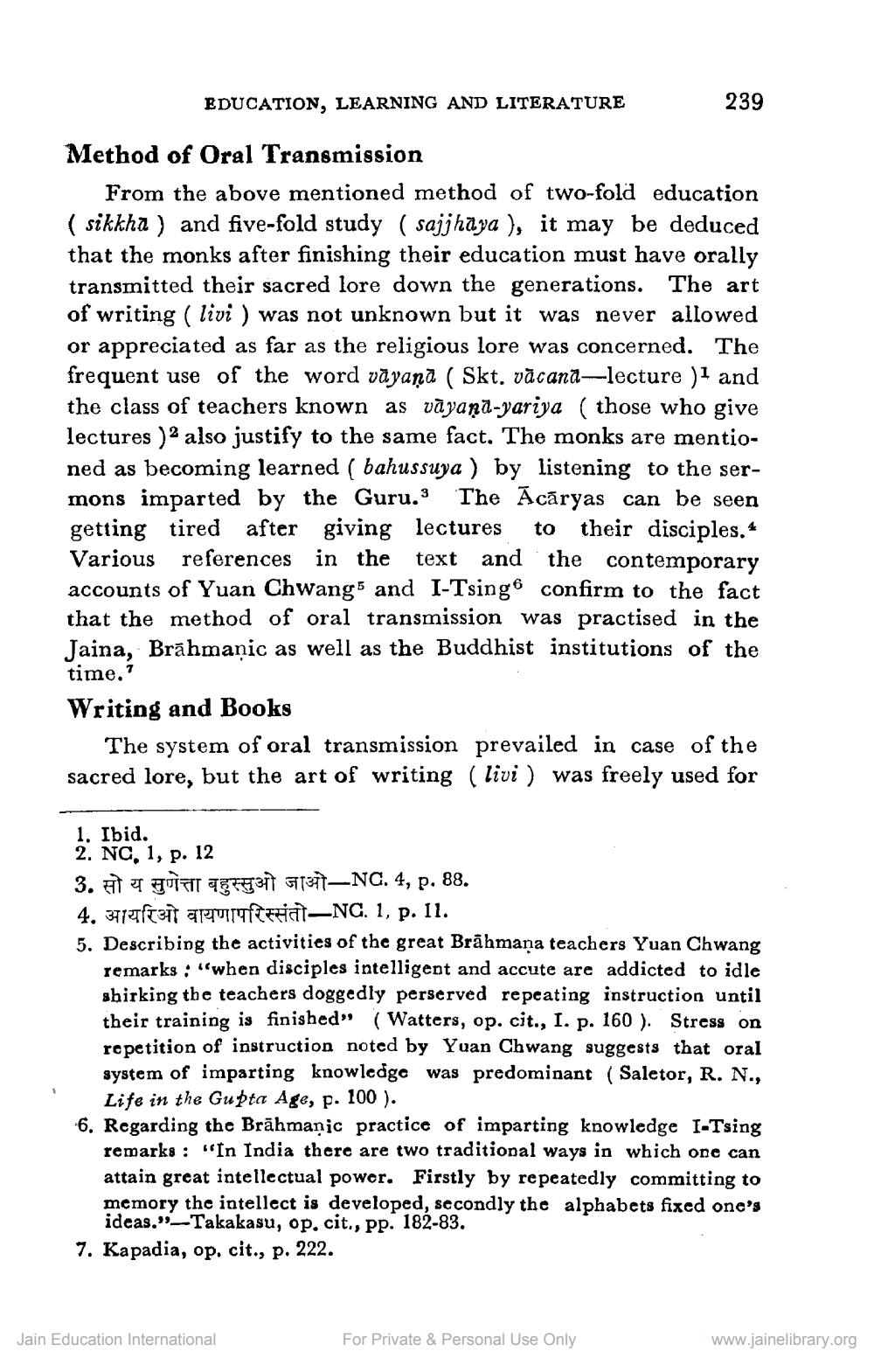________________
EDUCATION, LEARNING AND LITERATURE
239
Method of Oral Transmission
From the above mentioned method of two-fold education ( sikkha) and five-fold study ( sajjhāya ), it may be deduced that the monks after finishing their education must have orally transmitted their sacred lore down the generations. The art of writing ( livi ) was not unknown but it was never allowed or appreciated as far as the religious lore was concerned. The frequent use of the word vāyaṇa ( Skt. vācana-lecture )i and the class of teachers known as vāyana-yariya ( those who give lectures ) 2 also justify to the same fact. The monks are mentioned as becoming learned ( bahussuya ) by listening to the sermons imparted by the Guru.3 The Acāryas can be seen getting tired after giving lectures to their disciples. Various references in the text and the contemporary accounts of Yuan Chwang5 and I-Tsinge confirm to the fact that the method of oral transmission was practised in the Jaina, Brāhmaṇic as well as the Buddhist institutions of the time. Writing and Books
The system of oral transmission prevailed in case of the sacred lore, but the art of writing ( livi ) was freely used for
2. Hel. 1, p. 12
3. TIT TEFT311 FTTTNC. 4, p. 88. 4. 319freit acumftfrial-NC. 1, p. 11. 5. Describing the activities of the great Brāhmana teachers Yuan Chwang
remarks: “when disciples intelligent and accute are addicted to idle shirking the teachers doggedly perserved repeating instruction until their training is finished” (Watters, op. cit., I. p. 160). Stress on repetition of instruction noted by Yuan Chwang suggests that oral system of imparting knowledge was predominant (Saletor, R. N.,
Life in the Gupta Age, p. 100 ). 6. Regarding the Brāhmanic practice of imparting knowledge I-Tsing
remarks: "In India there are two traditional ways in which one can attain great intellectual power. Firstly by repeatedly committing to memory the intellect is developed, secondly the alphabets fixed one's
ideas." --Takakasu, op. cit., pp. 182-83. 7. Kapadia, op. cit., p. 222.
Jain Education International
For Private & Personal Use Only
www.jainelibrary.org




